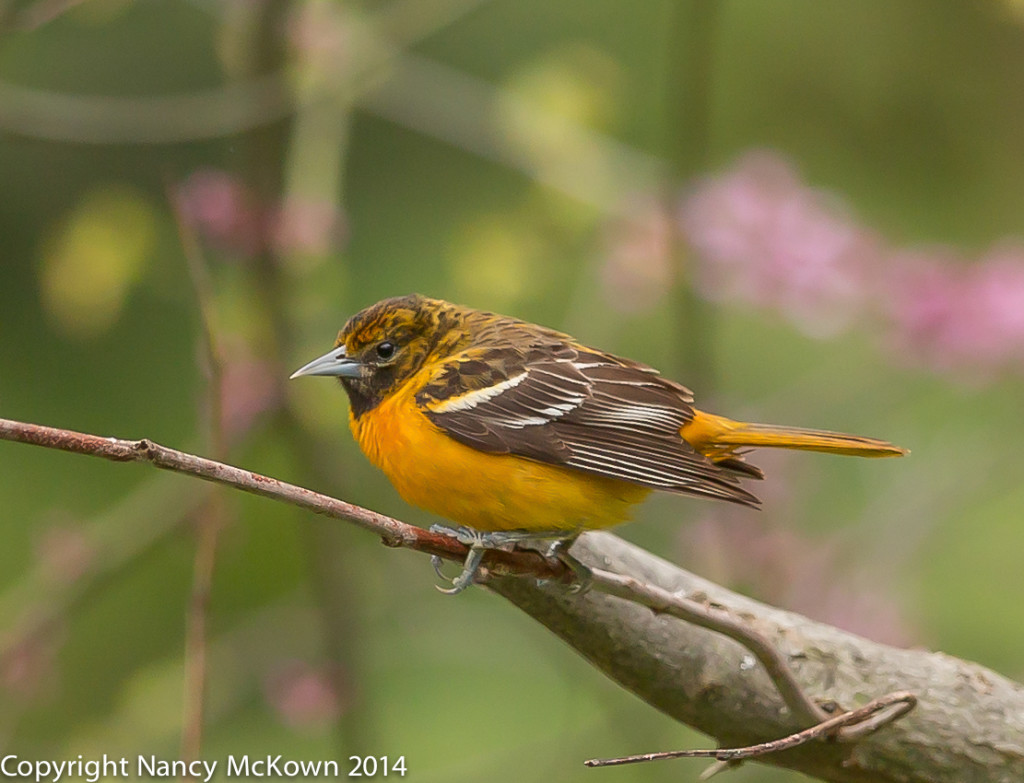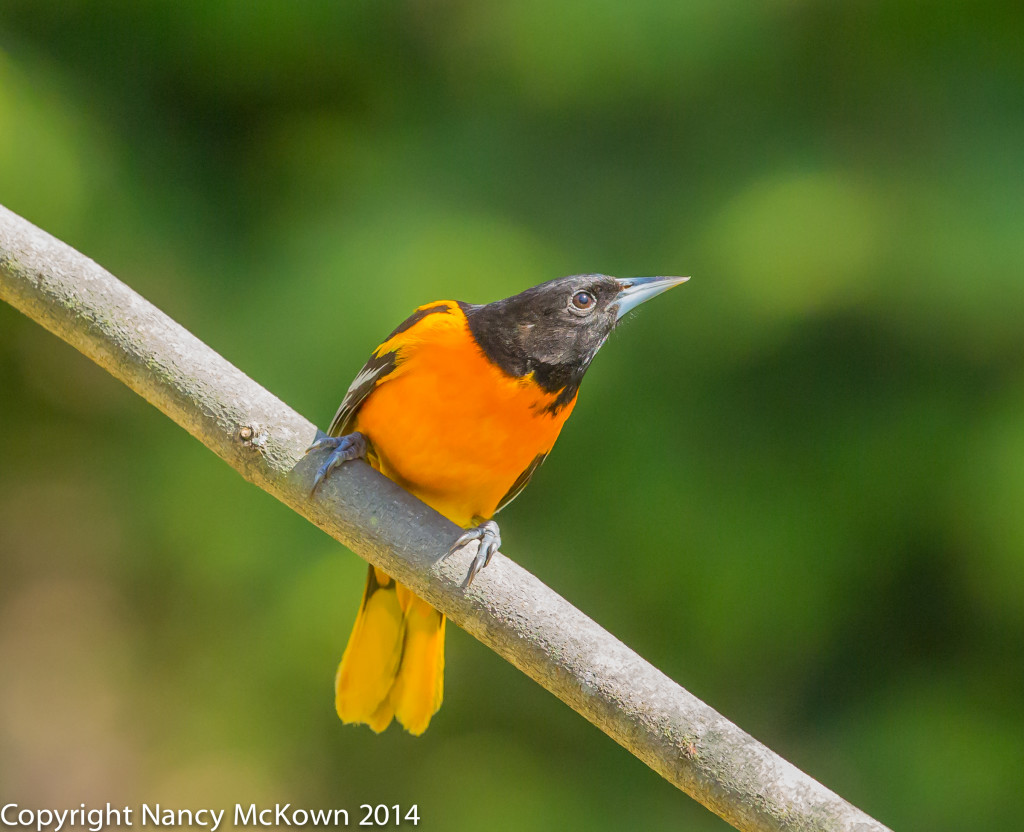Photographing Baltimore Orioles In Your Back Yard
Baltimore Orioles are one of my favorite birds. They are brilliantly colorful, vivacious birds that can be lured to almost any feeder with grape jelly, oranges and suet. Orioles appear quite shy while foraging for insects in wooded areas, but can be loud, competitive and greedily protective at the feeders.
Orioles were the perfect subjects to photograph in my outdoor studio setup.
Perches On Which Birds Pose for the Camera
The photos below of baltimore orioles were taken in my yard after I took a few moments to set up a couple of strategically placed perches in a location that would capture the best light and background. I also set up my blind.
The feeder is the main attraction for the birds, but it is also an unsightly distraction in photographs. Consequently, I set up the perches so the feeders would not be in the shot. The goal was to get the birds to use those perches while waiting for their turn at the feeder, thus creating the opportunity for a great photo.

ISO 3200; f6.3; 1/2000 Second
What are the Issues?
Setting up an outdoor nature studio allows you to not only attract birds, but also control the light, background scenery and other photographic elements. Photographers can set up a single, strategically placed perch (like I did) or elaborately design all aspects of the scene. Very convenient, especially if you do this at home.
But there are birders, photographers and other nature lovers out there who object to and are offended by outdoor studio setups. Below I’ve tried to list the arguments for both sides…the people who practice this type of photography, regularly and elaborately, and those who are opposed to any setups, call-ins or baiting practices, anytime, anywhere.
Arguments Against Outdoor Studio Setups
- Outdoor studio setups are too intrusive. They create unnatural feeding spots that spoil the habitat and stress the wildlife. These feeding stations not only makes birds dependent on man’s handouts, but also make them more vulnerable to predators.
- The use of audio calls, bait, and perching/background props disrupt natural bird behaviors, especially during migratory and nesting periods.
- Controlled studio setups take away from the challenge, excitement and the serendipity of wild bird photography. The photographs produced in these environments do not look authentic or realistic. The practice is deceiving to viewers and referred to as BOAS (Birds on a Stick) photography.
- Multiple bird feeders and other props that are used to draw in birds cause the spread of disease among birds (ex.mycoplasmal conjunctivitis).
- Intrusive photographers do not respect birds or the fragility of their ecosystem. They are only concerned with getting the shot.
Arguments In Favor of Outdoor Studio Setups
- Outdoor studio setups allow the photographer to artistically and technically control many variables in the composition, including the direction of the birds’ approach and the amount and path of the light. Photographers can also incorporate natural looking branches and flowers to get the perfect outdoor nature photo.
- Most viewers of the photos will not be able to tell that the scene is staged. These outdoor studio setups are designed to make the photos look natural, artistic, and ascetically pleasing.
- Birds are already acclimated to humans in their environment, so there is no real interference in the birds’ activities. Outdoor studio setups are not any more intrusive than bird watchers walking in the woods. They are certainly less intrusive than radio collars and banding of birds.
- Patience, understanding, keeping a respectful distance, and an understanding of the habits and nature of birds are essential components to successful outdoor studio setups.
- Businesses that advertise outdoor studio setups are on private property and cater to photographers by providing easy access to a wide variety of bird activities in an uncluttered and aesthetically pleasing, natural looking environment.
Photography Rules and Ethics
There are recognized and accepted guidelines and rules that first and foremost protect wildlife and the environment, but also attempt to address the concerns of both sides of this debate. Nature lovers and photographers should be familiar with the established ethical field practices outlined by the North American Nature Photography Association. See this link for more information.
In addition to the best field practices, there are also laws and rules (established by U.S.National Parks and National Wildlife Refuges) that all nature lovers and photographers should know and follow. These include certain permit requirements and prohibitions against harassing wildlife. Practices such as baiting, calling in, and setting up blinds in certain public areas are forbidden. There are also rules about going off the trails and “altering, moving, cutting, or defacing” certain public lands in the U.S. national parks and wildlife refuges.

ISO 800; f/2.8; 1/1000 Second

Oriole Keeps a Sharp Eye on His Competitors.
ISO 5000; f/6.3; 1/3200 Second
My Take
I treasure my time in the wild outdoors and make a point of leaving behind only my footprints. I also enjoy beautifully framed, natural looking bird photographs with minimal clutter and pleasing backgrounds. I don’t see anything wrong with setting up a scene in my back yard or on public land where it is allowable to add more appeal to the nature photo. I don’t believe I compromise the safety of the birds nor do I think these practices interfere with their life cycles or their habitat.
Wild Bird Survival for the Long Term
Finally, there are many larger, more critical issues that impact bird survival. These include problems like the steady decline in bird populations (of common and rare birds) due to habitat loss, poison, lack of food, global warming, artificial light, and wind turbines. The long term consequences of these human practices require our attention because they are much more likely to impact the survival of future generations of wild birds.









